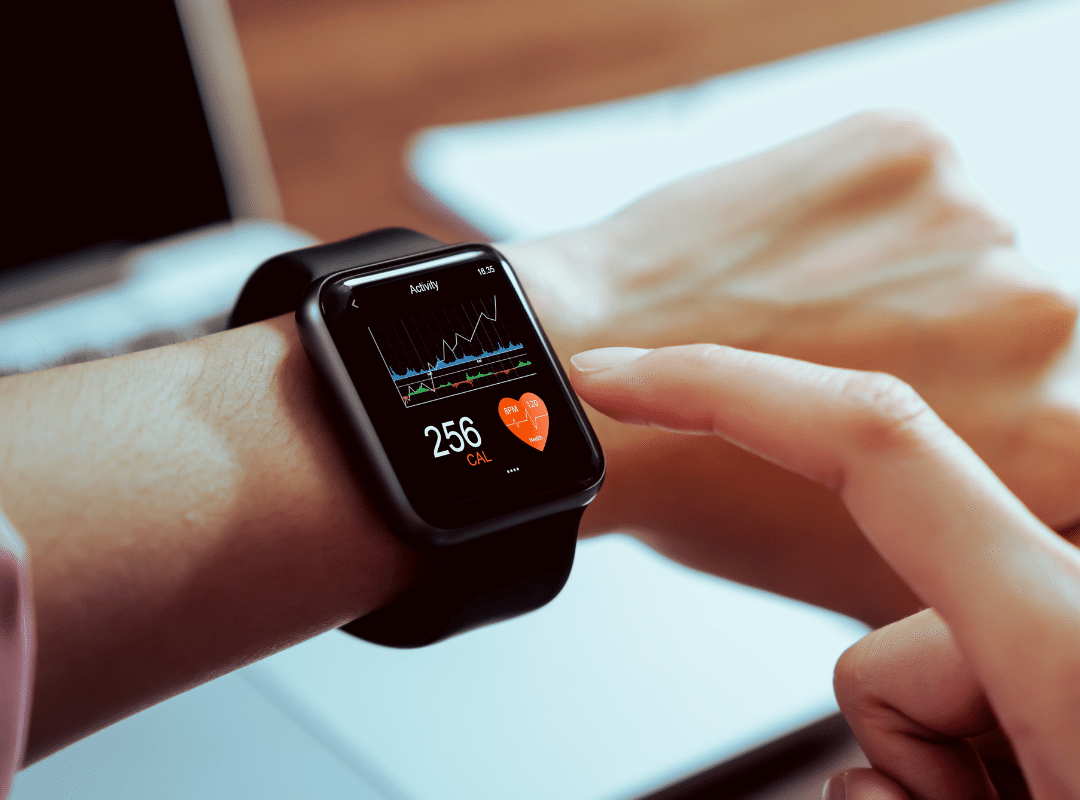What Technology Is Used in Assisted Living Today?
Imagine a world where long-term care technology is a gentle companion, guiding seniors through their daily lives. At The Westland House, various innovations in long-term care are transforming senior healthcare and enhancing the well-being of residents. From predictive analytics that catch health issues early to voice-activated devices that streamline everyday tasks, the integration of technology for seniors at The Westland House is reshaping how they live.
What other advancements are making a difference in their lives?
Predictive Analytics in Senior Care
As you navigate the complexities of senior care, predictive analytics emerges as a powerful tool that can significantly enhance the health management of older adults. By utilizing machine learning algorithms, you can analyze vast amounts of data to identify potential health issues before they escalate. For instance, wearable devices can detect early signs of heart attacks or falls, enabling quicker interventions that improve health outcomes. However, it’s vital to prioritize data security to protect sensitive information. By implementing predictive analytics, you foster a proactive approach to senior healthcare and guarantee that older adults receive the timely care they need. Embracing this long-term care technology can ultimately lead to healthier, happier lives for those you serve. Additionally, many assisted living facilities are now exploring financial assistance programs to help residents cover the costs associated with advanced technologies.
Telemedicine Solutions for Seniors
While predictive analytics provides valuable insights into senior healthcare, telemedicine solutions have emerged as a game-changer for seniors seeking accessible healthcare. These innovative tools allow you to consult remotely with healthcare professionals from home. With telemedicine, you can address medical concerns without the hassle of traveling, which can be a challenge for many seniors. This not only enhances healthcare accessibility but also promotes timely interventions and ongoing support. Tailored telehealth options are available, including telegeriatrics and telerehabilitation, ensuring your unique needs are met. By embracing telemedicine, you’re empowering yourself to maintain your health and well-being while enjoying the independence you cherish. Additionally, many seniors may qualify for financial assistance programs that can help cover the costs associated with telehealth services.
Voice-Activated Technology for Daily Living
Technology for seniors is revolutionizing daily living through voice-activated solutions that offer a seamless way to interact with their environment. With advanced voice recognition, seniors can easily control smart home devices, such as lights and thermostats, enhancing their comfort and safety. This innovation in long-term care provides daily assistance by setting reminders for medications, appointments, or important tasks, fostering greater independence. Additionally, engaging in conversational interactions with devices can alleviate loneliness and isolation, promoting emotional well-being. As you help seniors adapt to this long-term care technology, you’ll empower them to manage their homes effortlessly and maintain a sense of autonomy. By integrating voice-activated solutions, you’re enhancing their quality of life and making daily routines more manageable. Furthermore, many affordable senior living apartments now incorporate safety features that complement voice-activated technology, ensuring a secure environment for residents.
The Role of Virtual Reality in Assisted Living
Virtual reality (VR) is emerging as a powerful tool in senior healthcare, offering seniors immersive experiences that can significantly enhance their quality of life. With VR, you can provide residents with virtual travel experiences, allowing them to explore new places and cultures without leaving their homes. This technology for seniors entertains and serves as an effective form of cognitive stimulation therapy, helping to engage their minds and improve mental wellness. Incorporating VR into daily activities creates unique opportunities for social interaction and connection, reducing feelings of isolation. As you embrace this innovative approach, you’ll witness firsthand the joy and enrichment it brings to the lives of those you serve, fostering a more vibrant community. Furthermore, incorporating such long-term care technology aligns with the commitment to providing high-quality service at competitive prices, ensuring residents receive exceptional support.
Robotics Enhancing Care Support
As you consider the future of senior care, robotics is essential in enhancing care support for seniors. Robotic companions offer emotional support and engagement, reducing loneliness and isolation. These assistive robotics can help with daily tasks, such as bathing, dressing, and mobility, empowering seniors to maintain their independence. Imagine a robotic assistant providing physical therapy or reminding your loved one to take their medication, ensuring their safety and well-being. With 24/7 availability, these innovations in long-term care can adapt to individual needs, allowing for personalized care. By embracing robotics in assisted living, you’re not just improving quality of life; you’re fostering a compassionate environment that prioritizes the dignity and comfort of every resident.
Smart Home Technology for Safety and Comfort
Incorporating technology for seniors through smart home integration can greatly enhance safety and comfort in assisted living. Safety features, like smart security systems and motion sensors, can detect falls or unusual activity, alerting caregivers when needed. Smart thermostats and lighting systems allow seniors to control their surroundings easily, promoting independence. Voice-activated devices enhance accessibility by enabling residents to manage their environment without physical assistance. These innovations in long-term care not only improve safety but also provide a sense of comfort, making daily routines more manageable. By embracing smart home technology, you empower seniors to live more safely and comfortably in their assisted living spaces.

Wearable Devices for Health Monitoring
While many seniors seek to maintain their independence, wearable devices for health monitoring can significantly enhance safety and well-being. These smart devices, like fitness trackers and smartwatches, provide real-time health tracking, allowing you to monitor essential signs, activity levels, and potential health issues. They can detect irregular heartbeats or falls, offering peace of mind for both seniors and caregivers. Additionally, these devices promote fitness motivation, encouraging active lifestyles that contribute to overall wellness. With emergency call features, you can feel secure knowing help is just a tap away. By integrating wearable long-term care technology into daily life, you empower yourself and your loved ones to prioritize health while enjoying the independence you cherish.
Incorporating these innovations in long-term care at The Westland House not only enhances the quality of care but also enriches the daily lives of seniors. For instance, studies show telemedicine can reduce hospital readmission rates by up to 30%. The Westland House creates safer, more engaging environments tailored to individual needs by embracing tools like predictive analytics and voice-activated systems. As we continue integrating these senior healthcare advancements, we’re fostering a future where seniors can thrive, feeling connected and supported daily. For more information, please call us at 734-326-6537.
Frequently Asked Questions
What Technology Is Used in Assisted Living?
Assisted living communities utilize various technologies to enhance resident safety, comfort, and quality of life. Common technologies include emergency call systems, medication management tools, electronic health records, and smart sensors that detect falls or unusual activity. Many communities also offer communication platforms like video calling to help residents stay connected with family and friends. Advanced monitoring devices and personalized alert systems further support residents by providing immediate assistance when needed.
How is Technology Used in Elderly Care?
Technology plays a significant role in elderly care by promoting independence, ensuring safety, and facilitating communication. Examples include wearable devices that monitor vital signs, automatic medication dispensers to ensure timely dosing, and GPS trackers to assist those prone to wandering. Telehealth services enable medical consultations without leaving home, enhancing convenience and healthcare accessibility. Additionally, smart home systems offer voice-controlled lighting, temperature control, and security measures tailored to seniors’ needs.
What Technology is Commonly Found in Care Homes?
Care homes typically employ technology focused on safety, health monitoring, and improving residents’ daily experiences. Essential technologies include nurse call systems, electronic medical records, and automated medication tracking to enhance resident care accuracy. Additionally, many homes use assistive devices such as mobility aids equipped with sensors and alarms to prevent falls. Care homes increasingly incorporate interactive technologies like digital activity programs and virtual reality to keep residents engaged and stimulated.
What is Assisted Living Software?
Assisted living software refers to specialized digital platforms that streamline operations and care management within senior living communities. These platforms typically include electronic health records (EHR), medication administration systems, resident scheduling tools, and billing management capabilities. The software helps caregivers coordinate care plans efficiently, track residents’ health data, and ensure compliance with regulatory standards. By centralizing these tasks, assisted living software significantly improves communication among staff, residents, and family members.

